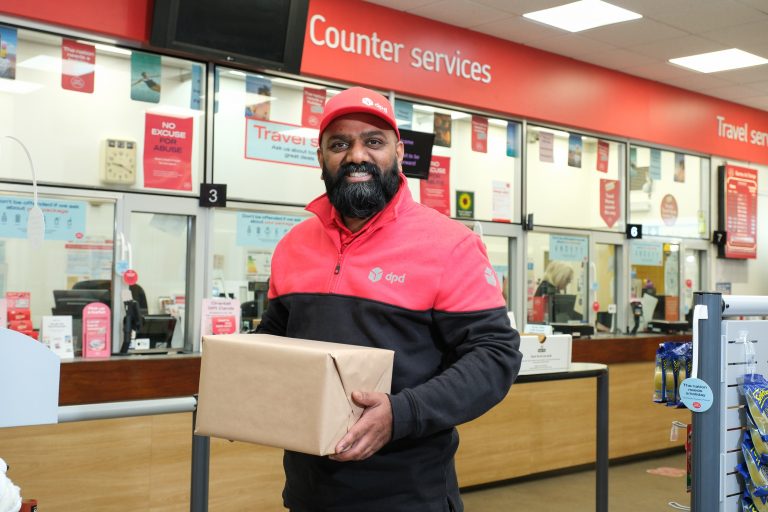For many stores, the key to unlocking a world of opportunity is maximising the number of customers you can bring through the door and there are several tried and tested footfall drivers that are guaranteed to do just that.
In today’s ultra-competitive retailing environment, the focus for many local retailers has shifted into just one area: profit. As margins get squeezed by everything from relentless promotions to a fascination with the £1 price point, it has become increasingly difficult for retailers to make that cash profit that they need to maintain a healthy business that provides significant employment and a vital service for the local community.
The reality remains however retailers can only make profit when customers come through the door and, more often than not, that means making the most of the most important footfall drivers. Bringing customers through the door more often and in bigger numbers has never been more important for retailers – so it’s vital that they make the most of the products and services that drive shoppers to the door on a regular basis.
Once those shoppers arrive, it’s the retailer’s task to use his or her skill, experience and creativity to ensure that as well as purchasing the service or product they came for, they also leave with an additional purchase or two.
Footfall drivers come in many forms, from the traditional newspapers, tobacco and Lottery that bring customers to your door most days of the week to services like PayPoint and, increasingly, Post Office counters.
The deregulation of the Post Office network has opened up a whole world of opportunity for local retailers in Scotland and it is becoming increasingly common to find Post Office facilities in convenience stores these days.
Meanwhile, over 28,000 stores in the UK offer PayPoint facilities with customers visiting every day in life to make use of them. Over 10 million people use PayPoint services every week. That’s a lot of footfall.
Post Office
According to data from the Association of Convenience Stores, the top three things people want on their high street are a food shop, a bank and a Post Office. The beauty of a convenience store with a Post Office local is that it combines all three, offering day-to-day personal and business banking for all the UK’s major banks.
The Post Office is more than a household name or brand in the UK: it’s an institution trusted and relied on by millions, and retailers with a Post Office local can harness the power of that trust to generate huge footfall.
Iqbal Sadiq, who owns a Spar store on Maryhill Road in Glasgow, added a Post Office to his busy shop when the nearby postmaster retired. He comments: “This is a very busy Post Office and shop. We do a lot of banking for local businesses. Customers love it because we’re open late until 10pm and on weekends, and they can get everything they need in one place.
“The branch has boosted both my retail and Subway too – people come in to use the Post Office and buy other items in the shop, and others pop in to buy a sandwich and decide to pay a bill at the same time.”
- The Post Office is the number one provider for letters and parcels in the UK
- It is the biggest provider of travel currency in the UK
- For personal banking, customers can access any bank in the UK through the Post Office
- 104 million banking transactions were conducted through the Post Office last year on behalf of the UK high street banks.
- 99% of UK personal bank account holders can access their bank services in a Post Office branch
- The Post Office may also actually become technically the UK’s largest banking network as Banks continue to close branches
- The Post Office is the preferred supplier for government services. For POCA the Post Office is the only place customers can withdraw money
- The Post Office is the largest provider in the world of money transfer – larger than Western Union
Most retailers will know that the Post Office is the number one provider for letters and parcels in the UK but fewer may be aware that it is also the biggest provider of travel currency in the UK and the largest provider in the world of money transfer – larger than Western Union.
For personal banking needs, customers can also access any bank in the UK through a Post Office and more than 104 million banking transactions were conducted through the Post Office last year on behalf of the UK high street banks.
Some 99% of UK personal bank account holders can also access their bank services in a Post Office branch and the Post Office is the preferred supplier for government services.
Research by him! also shows that 82% of customers say the Post Office’s presence influences their decision to make shop purchases at a particular store. For 73% of post office users, it is their main reason for visiting.
The Post Office also draws customers from far and wide, and keeps them in the store longer. Around 32% of Post Office users will travel more than half a mile to visit a store compared with 21% of typical c-store shoppers. Typical Post Office users spend 6 minutes 39 seconds in-store, compared with the 4 minutes 48 seconds convenience average.
A total of 23% of post office customers also buy something on impulse (vs 16% convenience average) and 78% of those using the Post Office also bought shop items. The average spend on shop items by the Post Office shoppers is £6.77.
PayPoint
For over 28,200 retailers in the UK, a key footfall driver is PayPoint, and it’s easy to see why with 818 million PayPoint transactions carried out annually.
PayPoint Group Marketing Director Steve O’Neill commented: “As more and more choice drives UK customers to shop around, the pressure on convenience retailers to maintain and grow footfall is mounting. Understanding the growing range of customers and their needs is key.
“Retailers should be continually assessing the products and services they offer in store to make sure it matches the specific needs of their customers. Technology, like the new PayPoint One retail platform, can provide insights into customer purchasing habits to help retailers gather this knowledge.
Capitalising on this by stocking products that are currently in demand is what will set a store apart from its competitors. Services are key to driving footfall in store. For instance, PayPoint services provide access to over 1,500 utility companies, transport firms and mobile providers, driving footfall into store and giving that store the leading edge over other retailers.”
- 818 million transactions annually
- 20 million parcels handled in store each year
- Over 28,000 stores in the UK
- 10 million people use PayPoint services each week
- Over 4,200 LINK-branded ATMs
- Over 10,000 retailers accepting debit, credit and contactless payments
- More than 6,000 Collect+ retailers
O’Neill also says that convenience retail should reflect its situation and surroundings, presenting an offering in tune with the community around it. From the moment customers walk through the door, to the offers and discounts they’re offered while in-store, right up until the moment of payment, the journey must be seamless.
He says: “Retailers should take advantage of the technology available in order to serve customers quickly, generate insights and offer the broadest range of payments possible, including contactless via card, phone and wearable devices.
“Through focus on the customer and their needs, a wide product and service offering, and an inclusive approach to payment, retailers can maximise the loyalty of their customers and increase sales.”
In today’s modern world, retailers must capitalise on every opportunity open to them. Footfall drivers will bring customers to the door – but it’s what they do when they are in the store that can really be the difference between success and failure.







